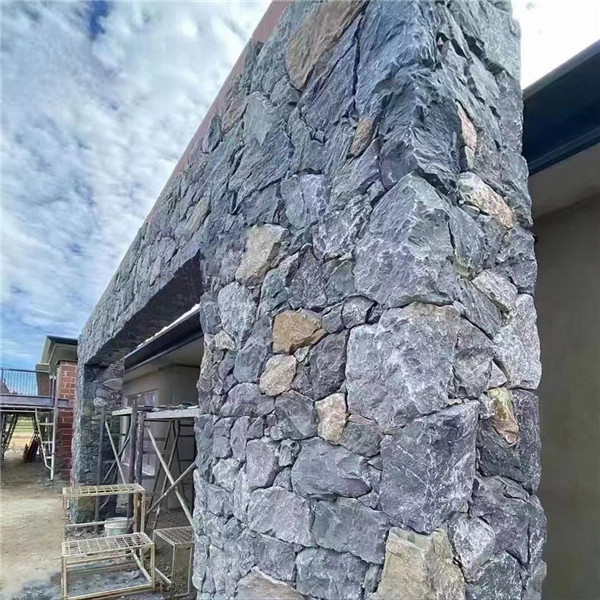Introduction:
A beautifully designed kitchen is a dream for many homeowners. From the choice of countertops to the selection of appliances, every detail plays a crucial role in creating a space that is both functional and visually appealing. One element that can elevate the overall aesthetics of a kitchen is the backsplash. Among the myriad options available, stone veneer backsplash stands out for its timeless elegance and versatility. In this article, we will delve into the world of stone veneer backsplash, exploring its benefits, different types, installation process, and maintenance tips, to help you make an informed decision when revamping your kitchen.
1. Understanding Stone Veneer Backsplash:
1.1 Definition and Composition:
Stone veneer backsplash refers to a thin layer of natural or manufactured stone applied to the wall behind the countertop and between the upper and lower cabinets. It offers the look and feel of natural stone with added flexibility and affordability. Stone veneer is typically made from materials such as slate, quartz, marble, or granite, which are cut into thin slices and adhered to a backing material.
1.2 Advantages of Stone Veneer Backsplash:
Stone veneer backsplash offers numerous advantages, making it an ideal choice for homeowners seeking a beautiful and durable kitchen design. These benefits include:

- Aesthetic Appeal: Stone veneer backsplash adds a sense of timeless elegance and natural beauty to any kitchen. The unique patterns and textures of the stone create a visually stunning backdrop.
- Durability: Stone veneer is highly durable and can withstand the wear and tear of a busy kitchen. It is resistant to heat, moisture, and stains, making it an excellent choice for areas prone to splashes and spills.
- Versatility: Stone veneer comes in a wide variety of colors, patterns, and textures, allowing for endless design possibilities. It can complement any kitchen style, from contemporary to traditional.
- Easy Maintenance: Stone veneer backsplash is relatively low maintenance. Regular cleaning with mild soap and water is usually sufficient to keep it looking fresh and vibrant.
2. Types of Stone Veneer Backsplash:
2.1 Natural Stone Veneer:
Natural stone veneer is made from real stone, such as slate, marble, or granite, which is cut into thin slices. Each slice retains the unique characteristics of the natural stone, including its color variations and texture. Natural stone veneer offers a truly authentic look but may be more expensive and require additional care during installation.
2.2 Manufactured Stone Veneer:
Manufactured stone veneer, also known as faux stone, is made from a combination of natural stone and synthetic materials. It is designed to mimic the appearance of natural stone while offering added affordability and ease of installation. Manufactured stone veneer is available in a wide array of colors and styles, making it a popular choice among homeowners.
3. Installation Process:
3.1 Surface Preparation:
Before installing a stone veneer backsplash, proper surface preparation is essential. The wall must be clean, dry, and free from any debris. Any existing backsplash or wallpaper should be removed, and the surface should be smooth and even.
3.2 Adhesive Application:
To apply the stone veneer, a high-quality adhesive is used. The adhesive is applied to the back of each stone slice and then pressed firmly onto the prepared wall. It is crucial to ensure that the adhesive is evenly applied to provide a strong bond.
3.3 Grouting and Sealing:
Once the stone veneer is installed, grouting can be done to fill in the gaps between the stones. This step enhances the overall appearance and helps to stabilize the stones. After grouting, it is important to seal the stone veneer to protect it from stains and moisture.
4. Maintenance Tips:
To keep your stone veneer backsplash looking its best, regular maintenance is essential. Here are some tips to ensure its longevity:
- Clean spills and splatters immediately to prevent staining.
- Use a mild, non-abrasive cleaner and a soft cloth or sponge to clean the surface.
- Avoid using harsh chemicals or abrasive cleaning tools that may damage the stone veneer.
- Apply a stone sealer periodically to maintain the integrity of the stone and protect it from stains.
5. Conclusion:
Stone veneer backsplash offers a timeless and elegant solution for enhancing the visual appeal of your kitchen. Faux stone veneer vs real stone veneer , durability, and versatility make it a popular choice among homeowners looking to create a stunning space. Whether you opt for a natural stone veneer or a manufactured one, the result will be a unique and eye-catching kitchen design. By following the proper installation process and practicing regular maintenance, your stone veneer backsplash will continue to impress for years to come. So, why wait? Transform your kitchen today with the timeless elegance of stone veneer backsplash.
